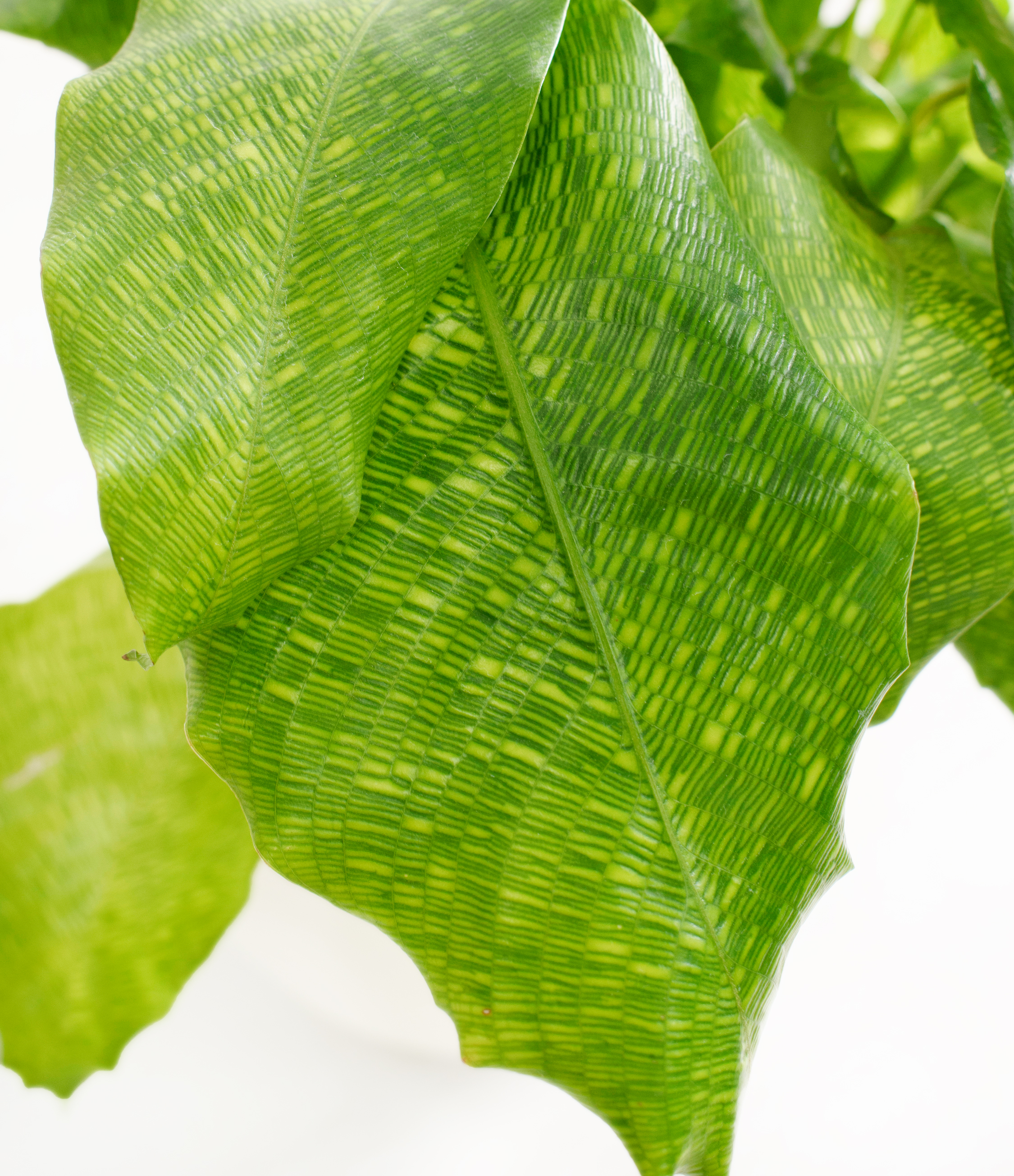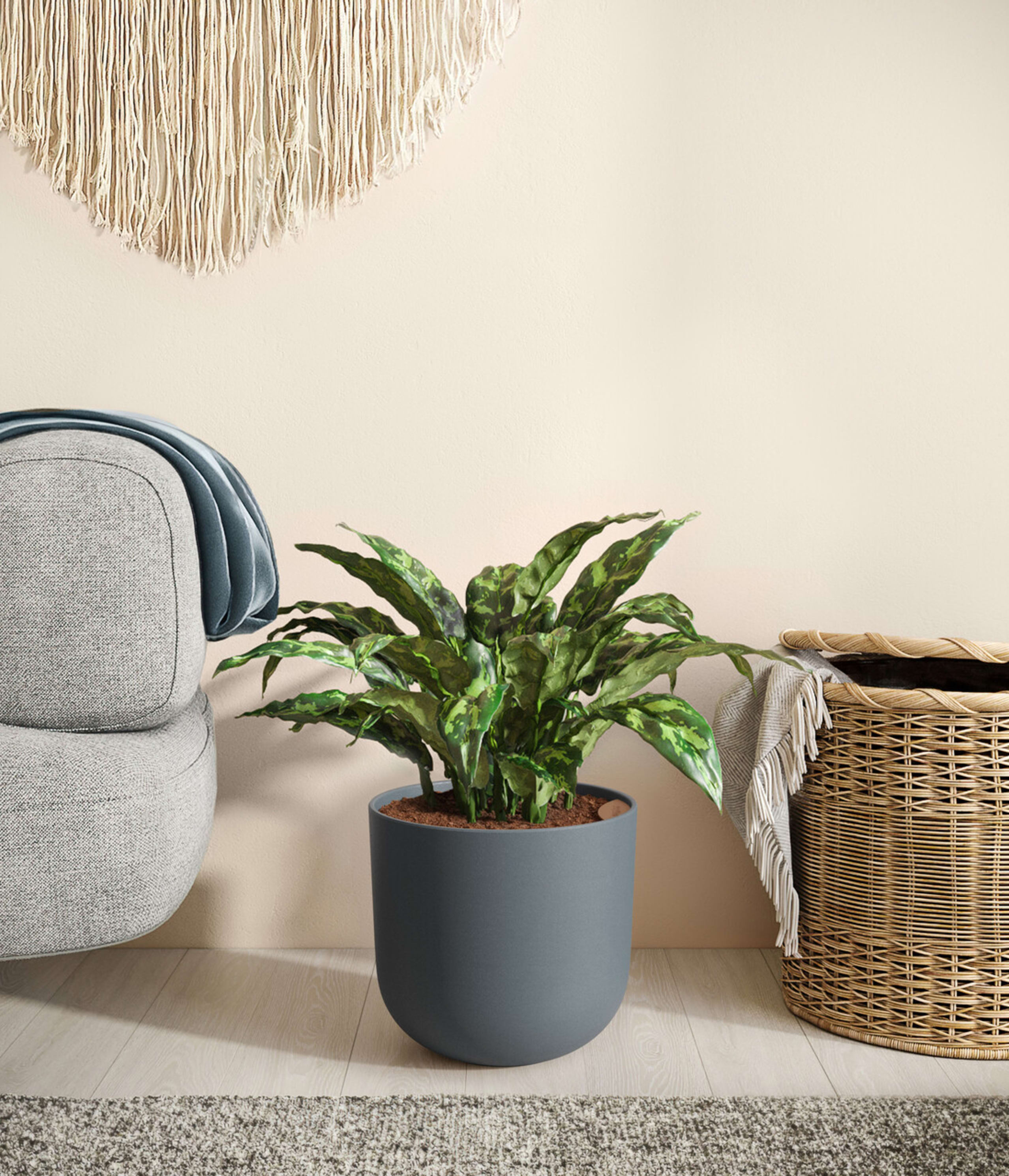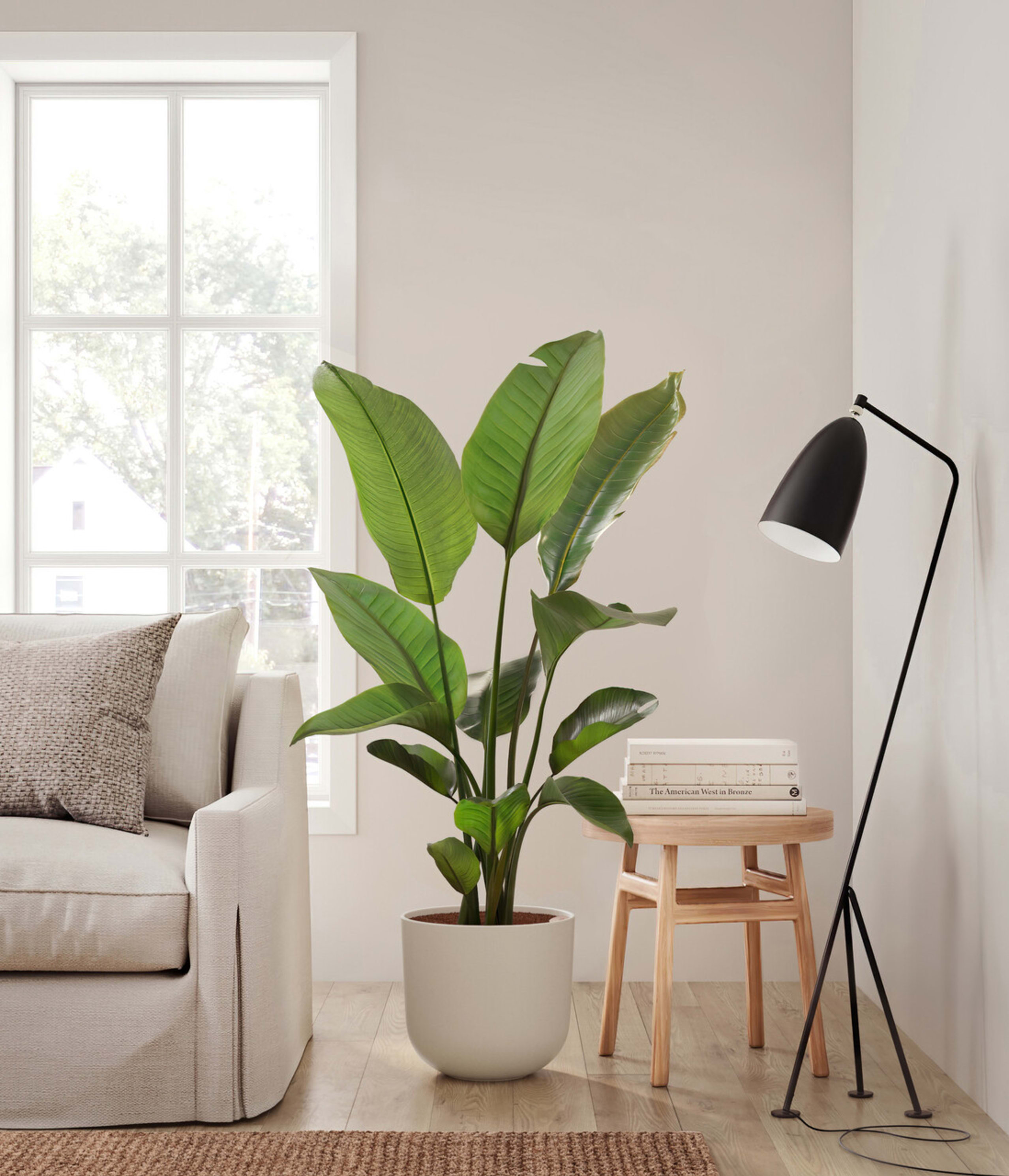How to Care for a Calathea Network plant
About Calathea Network
Native to the lush landscapes of Southeast Brazil, the Calathea Network, also known as Calathea Musaica, captivates with its visually striking leaf patterns. The leaves feature a complex network of green lines weaving across a dark backdrop, creating an effect reminiscent of an intricate mosaic. This plant not only enhances indoor aesthetics but also serves as a natural air purifier and is completely pet-friendly, ensuring safety for all your loved ones. Ideal for any indoor environment, it adds a touch of natural beauty without compromising the health and safety of household pets.
Other common names
- Network Calathea
- Mosaic Calathea
- Calathea Musaica
How Often Should I Water My Calathea Network?
With easyplant, watering your Calathea Network is simple. Make sure to check the easyplant reservoir once a month and fill it when empty, and you're all set!
Calathea Network Light Needs
Calathea Network grows best in a space with bright indirect light, where the sun rays are diffused. Avoid placing it in spaces with harsh direct sunlight or spaces without natural light.
Place it near an east or north-facing window, or use a sheer curtain to filter the sunlight for west or south-facing windows.
Calathea Network Plant Care
The Calathea Network flourishes best in a stable environment that closely mimics its natural tropical habitat. This means providing bright, indirect light, consistent warmth, and high humidity. Keep the plant in a location where it won’t experience sudden temperature changes or exposure to drafts, which can stress the plant and cause the leaves to wilt. To ensure even growth, rotate the plant once a month, allowing each side to receive adequate light. Keep the leaves clean by gently wiping them with a damp cloth, which will remove dust and enhance photosynthesis. Maintaining a consistent temperature between 65°F and 80°F with high humidity will help your plant thrive. To increase humidity, you can group it with other plants or use a pebble tray filled with water placed near the plant. Avoid positioning the Calathea Network near air conditioning or heating vents, as these can dry out the air and cause temperature fluctuations.
How Big Will My Calathea Network Grow?
Under ideal conditions, the Calathea Network can reach a height of up to 2 feet and spread up to 2 feet wide. Its compact and bushy growth habit makes it a perfect addition to indoor spaces, providing vibrant foliage without overwhelming the surroundings. The growth rate is moderate, and it may take a couple of years for the plant to reach its full size.
To encourage optimal growth, ensure your Calathea Network receives consistent care and an environment with bright, indirect light. Proper watering and maintaining high humidity will help the plant flourish, resulting in healthy and vibrant leaves. Occasional pruning is recommended to remove any dead or damaged leaves, which will enhance the plant's overall appearance and support the development of new foliage.
Temperature & Humidity
The Calathea Network prefers temperatures between 65°F and 80°F (18°C – 26°C) and high humidity levels above 50%. Avoid exposing it to cold drafts, and keep it away from air conditioning or heating vents. Consider grouping plants or using a pebble tray to enhance humidity.
Is Calathea Network Toxic for Pets & Kids?
The Calathea Network is non-toxic and safe for both pets and children, making it an excellent choice for households with little ones or furry friends.
Troubleshooting Common Problems with Calathea Network
On your first few days at home, your Calathea Network may show signs of stress like wilting or yellowing leaves. No worry - this is just the plant adjusting to its new location. However, if the symptoms persist, it's essential to review the care routine.
Brown edges on the leaves often indicate low humidity or underwatering. Make sure to refill the easyplant reservoir once a month to maintain consistent moisture levels. Grouping plants together or using a pebble tray can help increase humidity.
If the leaves turn yellow, it's often a sign of overwatering or poor drainage. Check the water reservoir and the soil to ensure you're not overwatering, and adjust accordingly.
Curling leaves usually result from too much direct sunlight, a drafty environment, or underwatering. Move the plant to a location with bright but indirect light, keep it away from drafts, and ensure the water reservoir is refilled once a month.
Pests like spider mites and mealybugs can also affect the Calathea Network. If you notice discolored or damaged leaves or see small pests on the plant, treat the infestation with insecticidal soap or neem oil.
Frequently Asked Questions about Calathea Network Plant
- How often should I water my Calathea Network?
If using an easyplant pot, check the reservoir once a month and refill it when empty. If you're watering manually, water when the top inch of soil is dry.
- What kind of light does the Calathea Network need?
The Calathea Network thrives best in bright, indirect light. Avoid direct sunlight to prevent leaf burn.
- Why are the edges of my Calathea Network's leaves turning brown?
Brown leaf edges often indicate low humidity or underwatering. Make sure the easyplant reservoir is refilled once a month, and consider increasing humidity around the plant.
- How big will my Calathea Network grow?
The Calathea Network can grow up to 2 feet in height and width under optimal conditions.
- Is the Calathea Network safe for pets and children?
Yes, the Calathea Network is non-toxic, making it safe for both pets and children.

 Small Plants
Small Plants Medium Plants
Medium Plants Plants Collections
Plants Collections Large Plants
Large Plants Huge Plants
Huge Plants